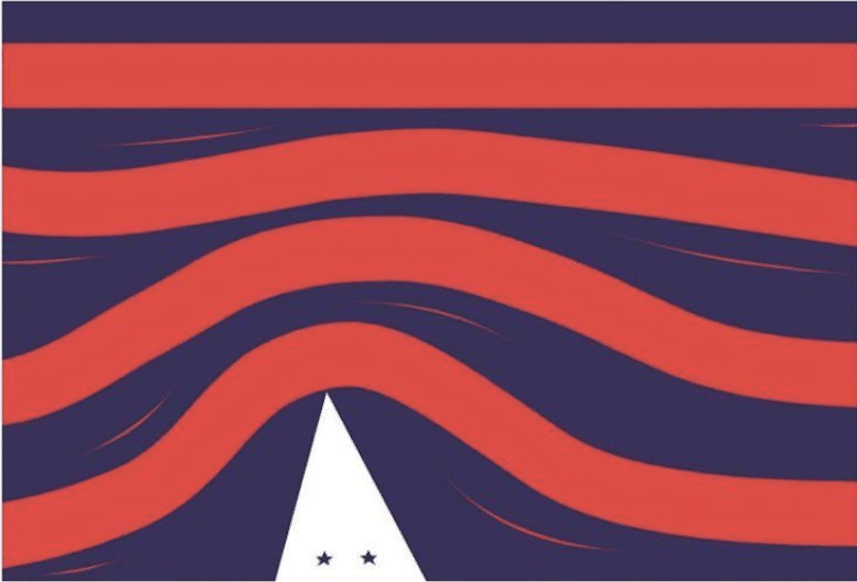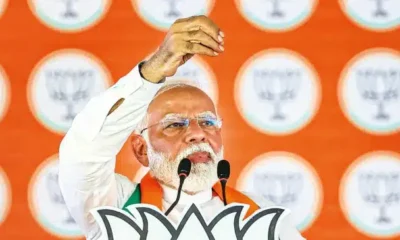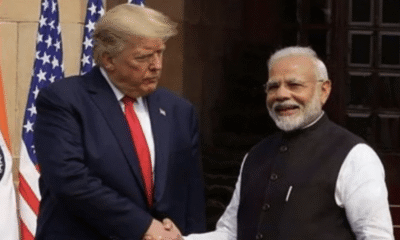
|
Getting your Trinity Audio player ready...
|
(The article was originally published by Indian Express on February 25, 2023 as a part of Dr Madhav’s bi-weekly column titled ‘Ram Rajya’. Views expressed are personal.)
THE UNITED STATES of America is variously described as an “idea”, a “dream” or “a land of opportunities”. The American dream has attracted millions from across the world to sail to its shores and make it big. In fact, America is a nation built by immigrants.
Indians are also one such immigrant group that made America their destination to shape their destiny. After the Mexicans, Indians are the second largest immigrant group in America. They went there in the late 19th century, mainly as agricultural or railroad workers. In the early 20th century, Indian students started sailing to universities like the University of California and Cornell.
In 1908, Girindra Mukerji, a student at the University of California, authored an article in the Overland Monthly in San Francisco, ti-ted ‘The Hindu in America’, giving some details about the early Indian arrivals. He claimed that the first Hindu students arrived in California in 1904. He estimated that there were a couple of thousand Indians in America, mostly labourers and some students. They included many Sikhs but were all generally described as Hindus.
Hindus were not always welcome in America in the initial years. There was a riot in Bellingham town near Seattle in September 1907 in which a mob of over 500 white Americans descended on a colony of 150 Hindus and attacked them. Finally, a commission appointed by the US Congress declared in 1911, that “Hindus were universally regarded as the least desirable race of immigrants thus far admitted to the United States”.
Indians in America have travelled far in the last one hundred years since those initial days of prejudice. From the “least desirable race of immigrants”, they became the most sought after. They made a place for themselves as professionals, earned riches, and made significant headway in the nation’s public life too.
“It is amazing. Indian-of-descent Americans are taking over the country: you, my vice president, my speechwriter Vinay…You guys are incredible,” US President Joe Biden exclaimed in a phone call with Indian-origin scientist, Swati Mohan, on her successful overseeing of the landing of NASA’s Mars rover in March 2021. Today, as the country is preparing for the next presidential election in less than two years, not one, but two Indian Americans are competing for the coveted post – Nikki Haley from South Carolina and Vivek Ramaswamy from Ohio.
Sadly, this heart-warming scenario has another side too. Hundred years ago, when youngsters like Girindra Mukerji left the shores of India, they thought that caste was the biggest hindrance to India’s progress. “Mr Mukerji represents the new, thinking, agile and patriotic Indian, who sees in the obliteration of caste and in industrial advancement and education an escape from the thraldom of religion and foreign domination,” the editor of Overland Monthly commented while publishing Girindra’s article. Hundred years later, the same Seattle, which witnessed anti-Hindu rioting in 1907, passed a resolution in its city council a few days ago against caste based discrimination in Indian American social life.
This calls for a serious debate. Is caste discrimination a reality among Indian-Americans today? Or is it a diabolical design to malign the community, which is emerging as the most successful immigrant group in America?
Caste discrimination has no sanction in India. Indian Constitution criminalises acts of such discrimination in any form. Hindu religious leadership, too, has been unequivocal in rejecting such evil practices. Then how is it that the discourse on caste has been mainstreamed in the US in the last decade?
There are some vested interests with dubious credentials and opaque funding sources that spearhead this smear campaign against Indian-Americans. They include organisations like Equality Labs, which produced a controversial report on caste discrimination in workplaces in the US in 2018, providing fodder for groups intending to denigrate the community and stall its progress in American public life.
There is no doubt that the uncivil practice of caste discrimination, if it exists in any form, must be obliterated. Two questions arise. First: Is there enough protection for Indian-Americans from any such discrimination?
Like in India, there are enough federal and state legislations in the US that prohibit any form of discrimination based on national origin, ancestry, and ethnicity. Many transnational corporations too have strict guidelines with regard to such discrimination. Those laws are universally, applicable to all Americans. But singling out Indian-Americans in the name of caste discrimination is in itself a discriminatory approach.
That raises the second question: Is the curse of caste discrimination so rampant among Indian Americans that it called for separate legislation? Equality Labs wants us to believe so. But prestigious institutions like the Carnegie Endowment, which has done extensive and more scientific studies, think otherwise.
In its Indian-American Attitudes Survey of 2020, the Carnegie report on ‘Social Relations of Indian Americans’ suggests that more than half of all Indian-Americans do not identify with caste at all. It dismisses the Equality Labs survey saying, “the study is not based on a representative sample, raising questions about the generalisability of its findings.” It actually says that Indian-Americans as a group are the second most discriminated against in America.
Groups that champion this false flag of caste discrimination are generally Hinduphobic. They are using this discrimination card to malign the Hindu religion. At a failed conference a couple of years ago on Dismantling Hindutva, they declared that Hinduism must be dismantled since it is nothing but casteism.
Such groups are no real friends of the discriminated. Instead, their politics may eventually harm the entire Indian-American community. Already, coming under the spell, corporations like Apple included caste discrimination as one of the prohibited aspects of employee behaviour. CISCO is struggling with a case by an employee about caste discrimination in which no conclusive evidence has beenpresented. Fearing more such legal disputes, companies may decide not to hire Indian-Americans at all.
It is time for Indian-American leadership to not only reject this Hinduphobia, but also ensure that casteism doesn’t raise its head in any form anywhere.




